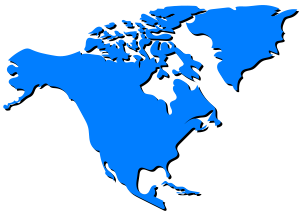Every month, 100,000 readers use the Dinosaur Database, but we receive no support from you. Developing and updating the database requires a lot of work. If you want it to remain open and be updated, please support us via the "Buy us a coffee" button available on every page or via the Support page.
Dinosaur: Lokiceratops rangiformis

| Length*: | 5.9 m | 19.4 ft |
| Weight*: | 2.5 t | 5,512 lb |
*The largest known specimen
Period
Epoch: Late Cretaceous
Stage: Middle Campanian
Years: 78.1 Ma
Details
Status: valid
Author: Loewen et al.
Year: 2024
Distribution
Area: North America
Country: USA
Region: Montana
Formation: Judith River
Description
Lokiceratops rangiformis
Lokiceratops rangiformis is a new centrosaurine ceratopsid from the Judith River Formation in Montana, dated to approximately 78 million years ago (Campanian stage, Late Cretaceous). Discovered in the Loki Quarry of Kennedy Coulee, it is part of the Albertaceratopsini clade, known for its rapid regional radiation in northern Laramidia. Its genus name Lokiceratops refers to the Norse god Loki, reflecting the asymmetry in its frill ornamentation, while the species name rangiformis highlights its resemblance to the antlers of reindeer (Rangifer).
Physical Characteristics
The holotype (EMK 0012) consists of an associated skull and partial skeleton, including the rostral, jugals, squamosals, parietals, and elements of the limbs and vertebrae. Lokiceratops is characterized by an unadorned nasal and unique epiparietal (frill) ornamentation, including large hypertrophied epiparietals that curve laterally along the frill’s margin. It had three episquamosals and six or seven epiparietals per side, a trait that sets it apart from other centrosaurines. The ischia show distinct distal kinks, another feature not observed in closely related taxa.
Diet and Feeding Habits
Like other ceratopsids, Lokiceratops was herbivorous, feeding primarily on low-growing vegetation, such as ferns and cycads. Its large, parrot-like beak was adapted for cropping tough plants, while its robust body and limb structure suggest it was a relatively slow-moving browser.
Habitat and Distribution
Lokiceratops lived in a riverine, alluvial environment, as indicated by the carbonaceous fine-grained sandstones and siltstones of the Judith River Formation. This environment would have supported diverse flora and fauna, including other ceratopsids, hadrosaurs, and theropods. The Judith River Formation is part of the Western Interior, which during the Campanian was divided into distinct northern and southern ecosystems along Laramidia.
Behavior and Social Structure
As with other ceratopsids, Lokiceratops likely lived in herds for protection against predators like Daspletosaurus. Its large frill and horns were probably used for social displays, mating rituals, and defense. The asymmetry of its frill ornamentation suggests a unique role in intraspecific behavior, possibly signaling dominance or reproductive fitness.
Discovery and Research
The Lokiceratops holotype was discovered in 2019 by Mark Eatman and excavated from the Loki Quarry in northern Montana. The specimen was prepared and studied at Fossilogic LLC and is now reposited at the Evolutionsmuseet in Denmark. The initial description of Lokiceratops was published in 2024 by Mark A. Loewen and colleagues, who noted the specimen’s distinct morphology and its significance in the context of centrosaurine diversity.
Significance and Interesting Facts
Lokiceratops rangiformis is significant for expanding our understanding of ceratopsid diversity and endemism in Laramidia during the Late Cretaceous. Its rapid regional radiation, alongside Albertaceratops and Medusaceratops, provides insight into the evolutionary dynamics driving the high speciation rates of ceratopsids. The extreme frill asymmetry of Lokiceratops makes it a particularly fascinating addition to the ceratopsid family.
Locations
Sources
Material: Incomplete skull and partial skeleton.
References: Loewen, Mark A.; Sertich, Joseph J. W.; Sampson, Scott; O’Connor, Jingmai K.; Carpenter, Savhannah; Sisson, Brock; Øhlenschlæger, Anna; Farke, Andrew A.; Makovicky, Peter J.; Longrich, Nick; Evans, David C. (2024). "Lokiceratops rangiformis gen. et sp. nov. (Ceratopsidae: Centrosaurinae) from the Campanian Judith River Formation of Montana reveals rapid regional radiations and extreme endemism within centrosaurine dinosaurs".



